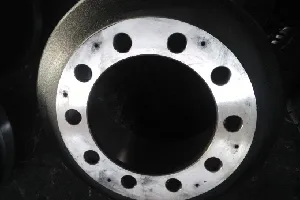
-
 Afrikaans
Afrikaans -
 Albanian
Albanian -
 Amharic
Amharic -
 Arabic
Arabic -
 Armenian
Armenian -
 Azerbaijani
Azerbaijani -
 Basque
Basque -
 Belarusian
Belarusian -
 Bengali
Bengali -
 Bosnian
Bosnian -
 Bulgarian
Bulgarian -
 Catalan
Catalan -
 Cebuano
Cebuano -
 Corsican
Corsican -
 Croatian
Croatian -
 Czech
Czech -
 Danish
Danish -
 Dutch
Dutch -
 ඉංග්රීසි
ඉංග්රීසි -
 Esperanto
Esperanto -
 Estonian
Estonian -
 Finnish
Finnish -
 French
French -
 Frisian
Frisian -
 Galician
Galician -
 Georgian
Georgian -
 German
German -
 Greek
Greek -
 Gujarati
Gujarati -
 Haitian Creole
Haitian Creole -
 hausa
hausa -
 hawaiian
hawaiian -
 Hebrew
Hebrew -
 Hindi
Hindi -
 Miao
Miao -
 Hungarian
Hungarian -
 Icelandic
Icelandic -
 igbo
igbo -
 Indonesian
Indonesian -
 irish
irish -
 Italian
Italian -
 Japanese
Japanese -
 Javanese
Javanese -
 Kannada
Kannada -
 kazakh
kazakh -
 Khmer
Khmer -
 Rwandese
Rwandese -
 Korean
Korean -
 Kurdish
Kurdish -
 Kyrgyz
Kyrgyz -
 Lao
Lao -
 Latin
Latin -
 Latvian
Latvian -
 Lithuanian
Lithuanian -
 Luxembourgish
Luxembourgish -
 Macedonian
Macedonian -
 Malgashi
Malgashi -
 Malay
Malay -
 Malayalam
Malayalam -
 Maltese
Maltese -
 Maori
Maori -
 Marathi
Marathi -
 Mongolian
Mongolian -
 Myanmar
Myanmar -
 Nepali
Nepali -
 Norwegian
Norwegian -
 Norwegian
Norwegian -
 Occitan
Occitan -
 Pashto
Pashto -
 Persian
Persian -
 Polish
Polish -
 Portuguese
Portuguese -
 Punjabi
Punjabi -
 Romanian
Romanian -
 Russian
Russian -
 Samoan
Samoan -
 Scottish Gaelic
Scottish Gaelic -
 Serbian
Serbian -
 Sesotho
Sesotho -
 Shona
Shona -
 Sindhi
Sindhi -
 Sinhala
Sinhala -
 Slovak
Slovak -
 Slovenian
Slovenian -
 Somali
Somali -
 Spanish
Spanish -
 Sundanese
Sundanese -
 Swahili
Swahili -
 Swedish
Swedish -
 Tagalog
Tagalog -
 Tajik
Tajik -
 Tamil
Tamil -
 Tatar
Tatar -
 Telugu
Telugu -
 Thai
Thai -
 Turkish
Turkish -
 Turkmen
Turkmen -
 Ukrainian
Ukrainian -
 Urdu
Urdu -
 Uighur
Uighur -
 Uzbek
Uzbek -
 Vietnamese
Vietnamese -
 Welsh
Welsh -
 Bantu
Bantu -
 Yiddish
Yiddish -
 Yoruba
Yoruba -
 Zulu
Zulu
Understanding the Operating Mechanism of Drum Brake Systems in Vehicles
The Working Principle of Drum Brakes
Drum brakes are a crucial component in the braking systems of many vehicles, providing effective stopping power and reliable control. Understanding the working principle of drum brakes helps to appreciate their functionality and importance in automotive safety.
At the core of the drum brake system is a drum, which is a cylindrical component attached to the wheel. The drum is typically made of cast iron and rotates along with the wheel itself. Inside this drum, there are brake shoes that are positioned against the inner surface of the drum. These shoes contain friction material on their surfaces, which is essential for effective braking.
The Working Principle of Drum Brakes
As the pistons move outward, they push the brake shoes against the inner surface of the rotating drum. This contact creates friction, which is the fundamental principle behind any braking system. The friction generated between the brake shoes and the drum slows down the rotation of the wheel, ultimately bringing the vehicle to a stop. The effectiveness of this process depends on several factors, including the material composition of the brake shoes and the condition of the drum.
drum brake working principle

An important feature of drum brakes is their self-energizing effect. As the vehicle moves forward, the rotation of the drum actually helps to force the brake shoes against it more strongly. This occurs because the leading shoe (the shoe that is pushed against the drum by the direction of rotation) catches the drum as it rotates, creating additional pressure. As a result, less effort is required from the hydraulic system to achieve effective braking, making drum brakes both efficient and responsive.
Drum brakes have several advantages, including their compact design and cost-effectiveness. They tend to be lighter than disc brake systems and are generally less expensive to manufacture. They also provide good performance under a variety of conditions, especially in low-speed scenarios. However, they have some disadvantages, such as a tendency to overheat during prolonged use, which can lead to brake fade. Additionally, drum brakes can be more challenging to service compared to disc brakes.
Over time, advancements in technology have led to the development of hybrid brake systems that combine the benefits of both drum and disc brakes. For example, many vehicles now utilize disc brakes on the front wheels for better heat dissipation and drum brakes on the rear wheels to reduce costs and maintain effective braking performance.
In conclusion, drum brakes are an essential component of modern vehicles, operating on a simple yet effective principle of friction. By converting the force from the hydraulic system into mechanical force through the action of the brake shoes against the drum, they provide the necessary stopping power that ensures safety on the road. Understanding how drum brakes work can help drivers appreciate the engineering behind their vehicles and the importance of regular maintenance to ensure optimal performance.
-
Safety Features of Red Brake Drumsපුවත්Aug.01,2025
-
Rear Drum Brakes Replacement for Older Vehiclesපුවත්Aug.01,2025
-
Professional Brake Drum Turning Services Explainedපුවත්Aug.01,2025
-
How Brake Drum and Rotor Puller Worksපුවත්Aug.01,2025
-
Brakes and Drums Compatibilityපුවත්Aug.01,2025
-
Anticipate Failures in Brake Drum Motorපුවත්Aug.01,2025
-
What Are Drum Brakesපුවත්Jul.07,2025
